PTC Gunsmithing Program Growth Mirrors Marketplace Growth
Hardly a week goes by that Piedmont Technical College (PTC) Gunsmithing Program Director John Littlefield doesn’t receive a call from a firearms-related business seeking referrals for work candidates qualified in the field of gunsmithing. The demand has been strong for years and remains so.
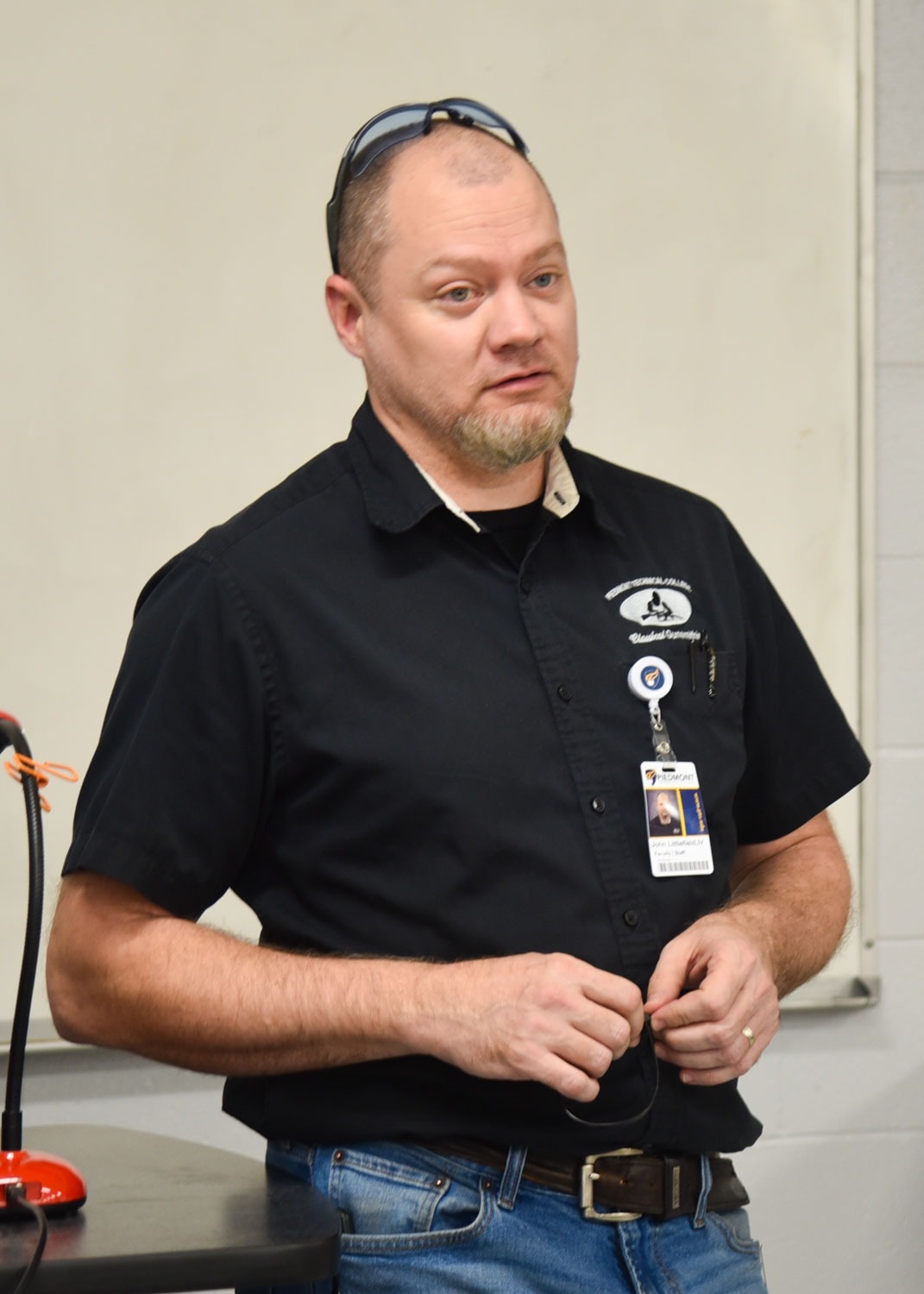
“Right now, the firearms industry is booming,” Littlefield said. “People have never been more aware of their right to possess firearms. There is an obvious need. The manufacturing sector is going like gangbusters.”
It’s understandable that Littlefield is the go-to recipient of so many calls. PTC offers the only Gunsmithing Program in South Carolina. The gunsmithing student body at PTC is extremely diverse, comprising individuals from all walks of life, with students (including those fresh out of high school, veterans, retirees, and women) ranging in age from 18 through 70. The program boasts a 93% placement rate for graduates. Many older graduates enjoy applying their skills as hobbies or in private, part-time business.
“About half of our past graduating class went to work at Palmetto State Armory,” Littlefield said. “Others stayed to continue their education here or were employed elsewhere.”
PTC maintains strategic partnerships with a variety of firearms-focused businesses and manufacturers, including Palmetto State Armory and longtime U.S. Department of Defense contractor FN Manufacturing, which recently announced plans to open an additional manufacturing plant in Pickens County in 2025. FN has operated a thriving production facility in Richland County for more than 40 years. Its $33 million expansion is expected to add 176 jobs to the company’s workforce.
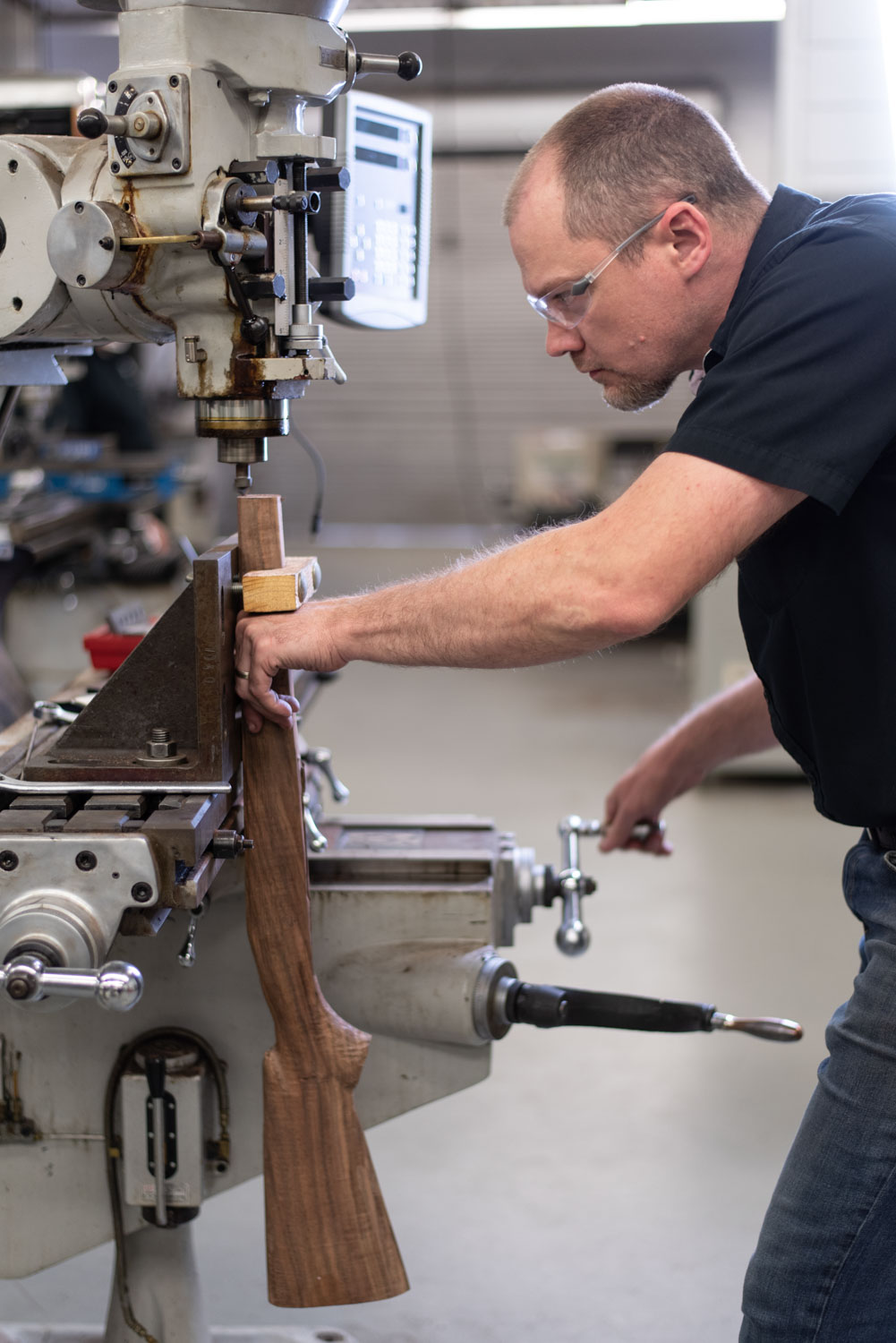
Gunsmithing Program expansion similarly is underway at PTC. The relocation of engineering and related programs to the O’Dell Upstate Center for Manufacturing Excellence two years ago has enabled Gunsmithing to expand to those formerly occupied spaces on the Greenwood campus, and new equipment additions and upgrades are on the horizon.
The art of gunsmithing comes with an extensive and quite focused list of required skills, including assembling and disassembling firearms, cleaning, soldering, grinding, and much more. Gunsmiths build, repair, and modify firearms to blueprint and customer specifications. While technically exacting, the profession at its highest levels also embraces high levels of craftsmanship and creativity.
One example is the “checkering” detail carved into the firearm grip. At first a basic utilitarian feature to help people better grasp their weapon, checkering has evolved beyond simple patterns to more elaborate designs, based on customer demand.
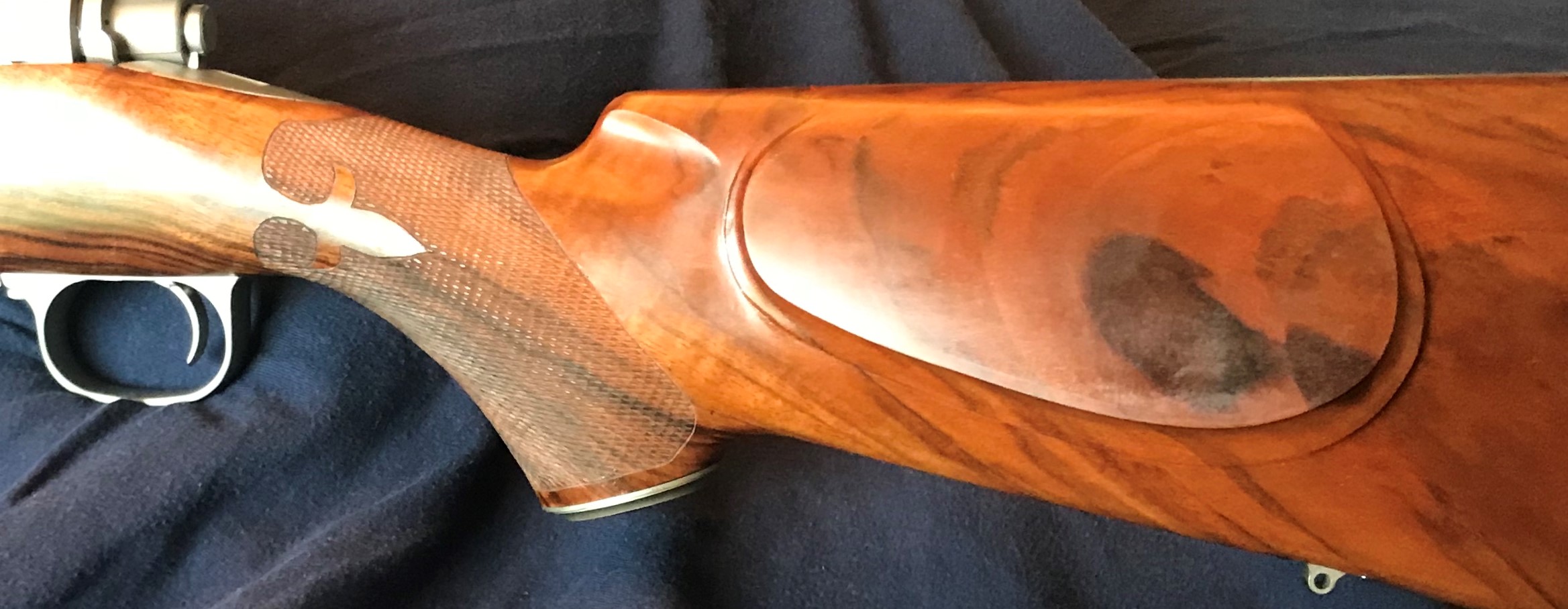
“In the past with firearms, gunsmiths carved a basic checkerboard pattern into the grip. Today we use a diamond pattern. We actually cut diamond shapes into the gun stock,” Littlefield explained. The work engages both sides of the brain. “I think people would be surprised to find out how cerebral gunsmithing is. There is a lot of engineering and math that go into making firearms.”
As a child, Littlefield watched his grandfather enjoy the art of gunsmithing. It was a passion he came to share but wondered whether he could make a living with it.
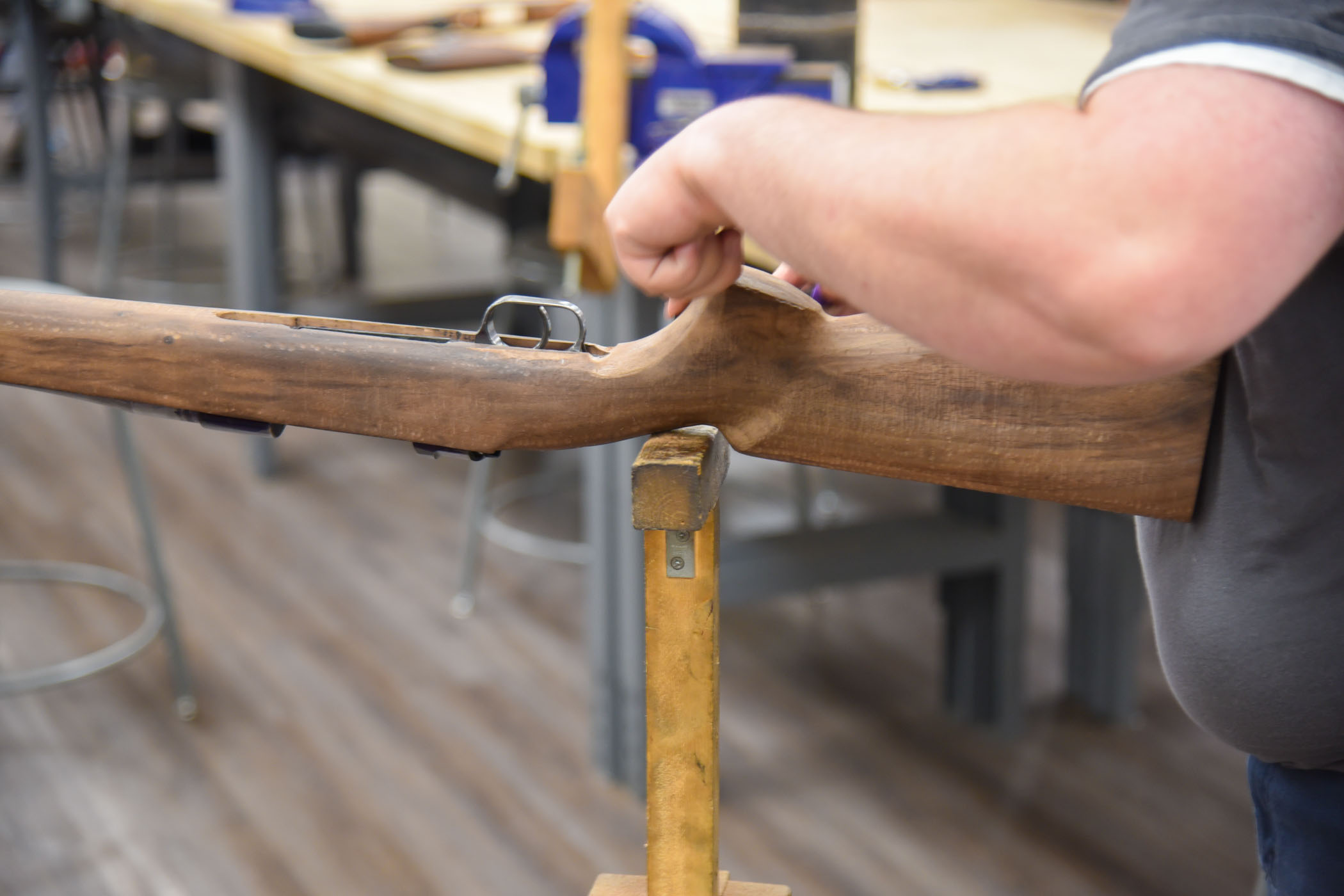
“I reached out to different gunsmith companies and asked if it was a viable career. It was, so I enrolled in the Colorado School of Trades (CST),” he recalled. CST is among the oldest gunsmithing schools in the country. “After I got my gunsmithing education, I began working there.”
Littlefield eventually met and became friends with PTC’s (former) Gunsmith Program Director Jerry Capone. When Capone had an opening for an instructor in 2015, Littlefield joined the PTC faculty and has been with the college ever since. He was promoted to program director after Capone’s retirement in 2021.
The best gunsmithing students, Littlefield says, are conscientious to the point of perfectionist, because “you can’t make a mistake” with regard to safety and quality.
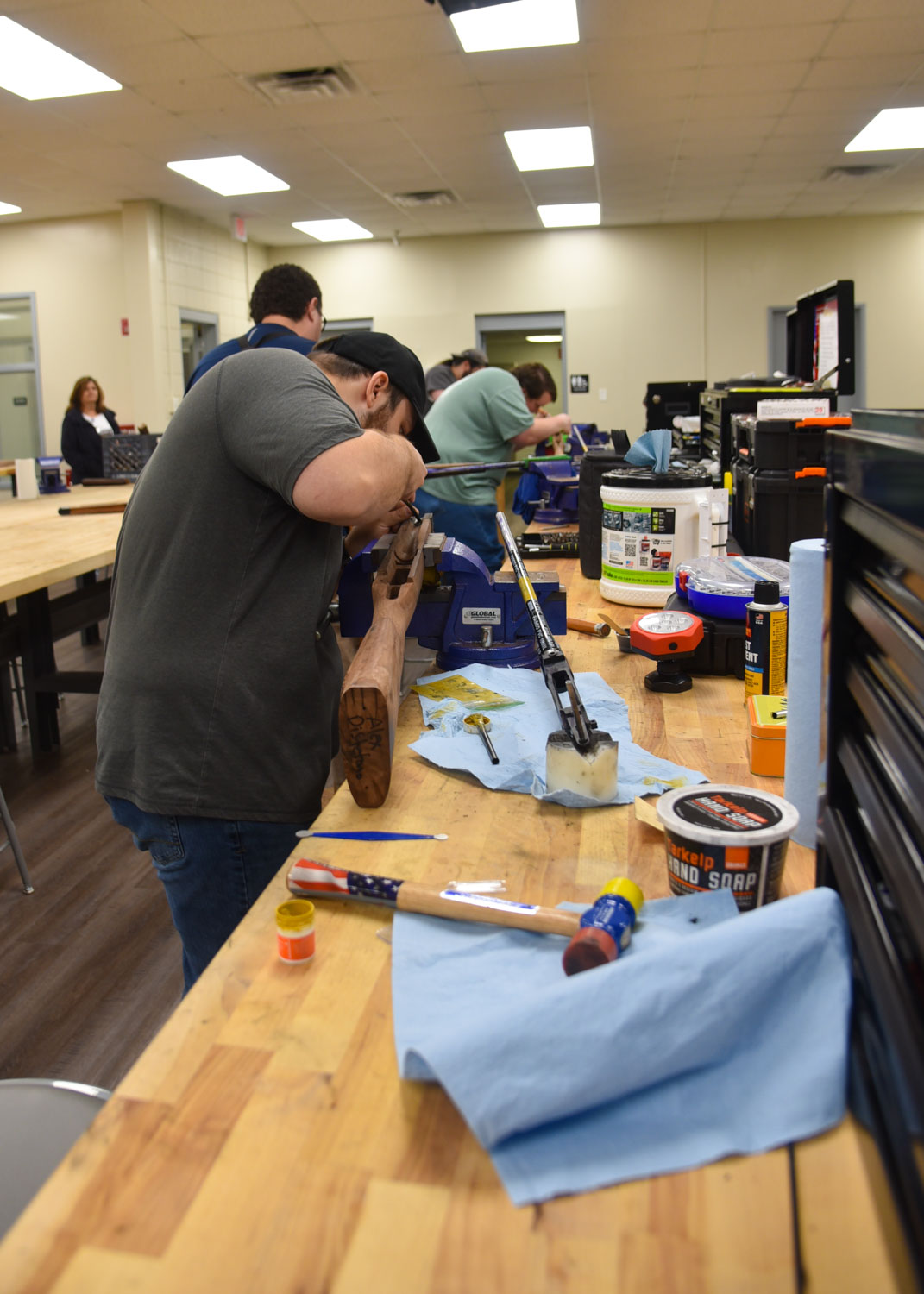
“We are very much a ‘safety-first’ curriculum. The first course our students take is gunsmithing safety,” he said. “Also, we concentrate a lot on hand tools. A lot of our clientele look for hand-finished products.”
Littlefield is pleased to see interest in gunsmithing continue to grow and aspires to instill in all of his students an overall appreciation for excellence.
“We try to give them as well-rounded an education as possible,” he said. “The most difficult thing to learn in our program is patience and holding oneself to the highest standard possible.”
For more information about PTC’s Gunsmithing Program, visit www.ptc.edu/gunsmithing.
PHOTOS:
• PTC Gunsmithing Program Director John Littlefield
• An example of “checkering” on a rifle stock
• A student examines parts of a handgun
• Students at work in the gunsmithing lab
• A student works on a rifle stock